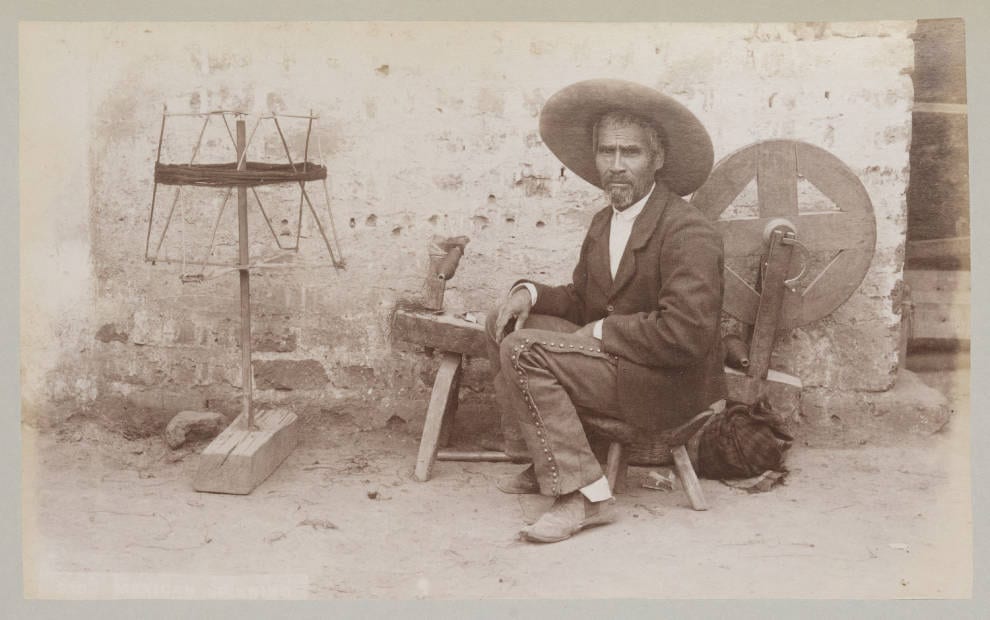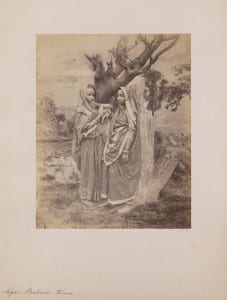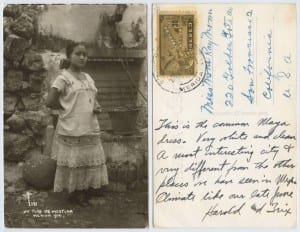William Johnson, accounted with the credibility of William Henderson, took this photograph between the years 1855 and 1868. Although little information is provided about photographer, it is recorded that the Englishmen was one of the founding members of the Bombay Photographic Society in 1854. In reference to the portrait titled “Nagar Brahmin Women,” two dark skinned Indian women stand on a hillside overlooking a town. The women are covered in expensive looking clothes and jewelry (bracelets and necklaces), yet are missing shoes. It seems as if the women are sulking and pondering about life based on the visual portrayal of them gazing into the ground. A scarce looking tree also accompanies the women, which is located directly behind them.
Based on these observations, it can be deduced that these Nagar Brahmin women are depressed about the imperial rule of the British. The scarce tree can provide relevance to the Caste System. In this case, the tree can possibly symbolize the struggle of Brahmin women because of division of Indian populations into varnas, which directly affected these women’s lifestyles, cultures, and religions. It can also be depicted that these women are holy or priestly and Hindu due to their positions of being Brahmin.
Many questions may arise from viewing this photograph such as: Why are these women not looking at the camera while being illustrated? Why are both of these women not wearing shoes? By what measure were these women subjected to?
M.F. took this photograph in Yucatan, Mexico somewhere in the 1920s. In this collection of early postcards from Mexico, we are presented with a Mestiza looking woman. The title of the postcard is “Un Tipo de Mestiza, Merida, Yuc”. She is wearing a white blouse with a white skirt and is looking directly into the camera. She is also wearing simple looking earrings, a necklace, and black slip on shoes. She is standing next to an old well with a torn down pulley-system. In addition, she appears to have been retrieving water recently as there is a rusty bucket next to her torso.
Based on these observations, it can be deduced that this Mestiza women is proud of who she is and her identity. This can be due to the placement of her arms behind her back insuring the concept of being proud. However, it can also be depicted that she is serving for others as she is standing directly next to the well. It is possible that the women is under constant threat of work to support her family. Because of the implementation of the Sistema de Castas in colonial Mexico in the late 19th Century, this women may still be prideful of her race/culture in the idea that the Mexican people are deterring hostility through this concept known as cross blending.
Many questions may arise when viewing this photograph, such as: Why did the photographer choose to take a picture of this woman in front of a well? Why is the woman working alone with no help? When was the exact date this postcard was mailed? Why is she staring into the camera?



